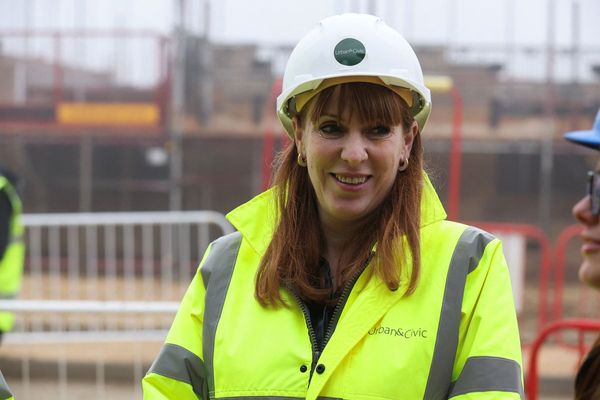
If Scott Morrison secures victory on Saturday he will face an array of major economic challenges with a massive structural deficit, soaring inflation, rising interest rates and real wages collapsing at the fastest pace in decades.
If he loses, he will leave a decidedly mixed legacy of Coalition economic management over the past nine years.
First, the successes. When Tony Abbott won in 2013, unemployment was 5.7%. Now it’s 3.9%. And under Abbott, unemployment was persistently over 6%. But under Malcolm Turnbull (with Morrison as treasurer), unemployment fell significantly, with a major jobs boom that continued when Morrison became prime minister. That pushed unemployment from 6% when Turnbull replaced Abbott to 5% when Morrison went to the 2019 election.
Even more impressive was the rise in participation: 64.8% when Labor left office; 66.3% now, defying all those longstanding predictions of an ageing workforce. And that was entirely due to rising female participation: 58.7% in 2013; 62.2% now.
That is a historic achievement in terms of the economic empowerment of women, and the Coalition owns it.
Dig a little deeper and you’ll see what drove this. While politicians love to talk about the importance of manufacturing — and there’s a bipartisan consensus now (there wasn’t under Abbott) that we should be propping it up — the manufacturing workforce has shrunk by a net 90,000 jobs since the Coalition was elected, from 8.2% of the workforce to 6.4%.
The big workforce now of course is the health and caring sector, and that has grown massively: from 1.4 million workers in 2013, or about 12% of the workforce, to 2 million workers, or 15%. More than three-quarters of the sector’s workers are women. And while many of those jobs have been in hospitals run by state governments, the Commonwealth is an important contributor to hospital funding, so Morrison gets at least part of the bragging rights for the historic rise in female participation.
We’ve also seen the continuing expansion in the cafe culture. The ABS retail sales data tells the story: since 2013, retail sales are up 45%, but sales in cafes, restaurants and takeaways are up 53%. The “food and beverage services” workforce has grown 20% in that period.
But that great success on jobs is the backdrop to the Coalition’s greatest failure: wage stagnation. (Although “failure” suggests that it wasn’t deliberate policy by the government.) It’s true that wages growth had fallen to 2.7% when Labor lost office, and it’s 2.4% now — but the average annual Wage Price Index growth under Labor was 3.4%. Under the Coalition it’s been just 2% — and recall that the Abbott government started off with Eric Abetz warning there would be a wages explosion.
That has meant real wages falls for hundreds of thousands of private sector workers, especially in industries like construction and mining, over the past nine years, which has in turn flowed through to lower economic growth — that averaged less than 2.3% a year under the Coalition compared with 2.6% under Labor.
The slump in real wages in mining is the most astonishing given the resources and energy sector has enjoyed a remarkable boom with rising volumes — especially iron ore, coal, LNG and lately green minerals such as lithium.
Since January 2018, Australia has had its longest run of trade surplus in history — 51 months. That has seen Australia’s trade account run up the biggest surpluses ever seen. That reversal of our international financial position has also been driven by our big super funds — the boogeyman of the Liberal Party — investing offshore: Australia now has an investment outflow instead of a net inflow, and our funds own more listed shares offshore than foreigners own here — the first time in Australian history.
That wage stagnation was somewhat offset by lower inflation. That averaged 2.8% under Labor compared with 1.9% under the Coalition, but that’s now forgotten as a surge of inflation flows through the economy from record government deficits and external price pressures, sending real wages backwards and giving workers a clear taste of what deliberate wage suppression entails for their incomes.
Those government deficits are another central feature of the Coalition’s economic record, demonstrating that it is the party of high spending and high taxing.
Under Labor, spending averaged 25.6% of GDP — and that includes the Rudd stimulus spending. Under the Coalition, spending has averaged 27.2%. That obviously includes the emergency stimulus spending of the pandemic — but it’s also much higher because in the first three years of the Coalition government, spending stayed at 25.4% to 25.5% of GDP.
A word about that: while the 2014 budget was Abbott’s political tombstone, it was also the right macroeconomic call to keep spending going at the level inherited from Labor and to keep the deficit going. Remember the high unemployment of that period? If Abbott and Joe Hockey had slashed spending back to, say, the level Wayne Swan had it in 2012 (23.9% of GDP) they’d have caused even higher unemployment.
Under Labor taxation averaged 20.9% of GDP. Under the Coalition, it’s averaged 22.3%.
But despite those higher taxes, net debt now stands at 27.6% of GDP. It was just 11.7% under Labor — and the Coalition claimed then that was criminally high. It is still expected to climb further to one-third of GDP.
All that spending and debt have certainly bought us a lot of jobs. But it’s also bought us an inflation problem, and it hasn’t given workers a decent pay rise — not for nearly a decade. Morrison gets to claim much of the credit for the good — and the bad.







